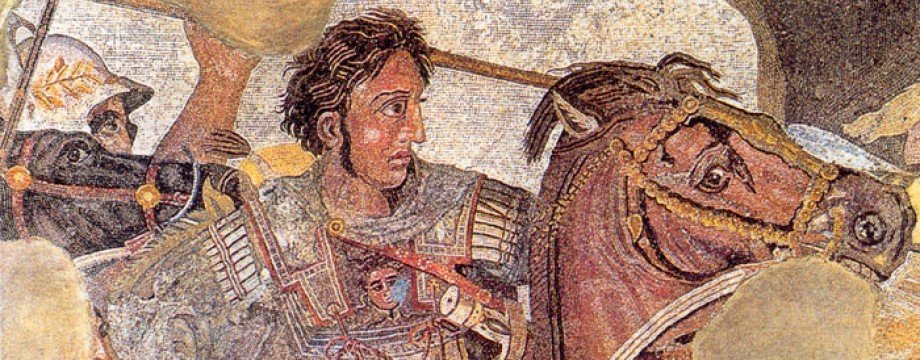In his entry for Hephaestion in his Who’s Who in the Age of Alexander the Great (Wiley-Blackwell 2009 pp.133-6) Waldemar Heckel makes a number of contentious statements about the son of Amyntor, his character and military skills. One in particular has been on my mind since I read it before Christmas. Heckel writes,
[i]n the spring of 328, when the army was divided into five parts, [Hephaestion] commanded one contingent (A 4.16.2) in a mission that appears to have done little more than win back several small fortresses to which the rebellious natives had fled.
At first glance, this statement tells us something about the 328 B.C. campaign rather than Hephaestion but in my opinion Heckel uses it to unfairly denigrate Hephaestion’s abilities as an military officer.
Before I give my reasons for saying this, let’s look at the passage from Arrian that Heckel cites,
Four officers - Polysperchon, Attalus, Gorgias, and Meleager - were left in Bactria with instructions to destroy all natives who had refused submission and to keep a sharp look-out for any further trouble… Alexander himself, after crossing into Sogdiana, divided his remaining strength into five, one division to be commanded by Hephaestion, another by Ptolemy, son of Lagus, a third by Perdiccas, a fourth by Coenus and Artabazus. The fifth he took over himself and proceeded with it in the direction of Marakanda, while the other four commanders carried out offensive operations as opportunity offered, storming the forts where some of the native tribesmen were trying to hold out, or receiving the voluntary surrender of others.
(Arrian IV.16)
So, how does Heckel seek to denigrate Hephaestion?
He does so by minimising the importance of the campaign in terms of the objective (it was about no more than the capture of a few ‘small fortresses’), the number of men involved (five divisions) and its geographic range (Sogdia).
By doing so Heckel implies that the campaign made no great contribution to Hephaestion’s standing as an officer. This allows him to still refer to Hephaestion as ‘relatively inexperienced’ when he and Perdiccas travel to the Indus River to build a bridge for the Macedonian army to cross - even though it is now 326 and the son of Amyntor has been with the expedition since its start in 334 and involved in all its major battles and movements!
Objective
When Heckel says that the mission involved no more than ‘win[ning] back several small fortresses to which the rebellious natives had fled’ he makes it out to be no more than a footnote in the story of Alexander’s expedition.
However, I would suggest that there are no minor campaigns when one is seeking to end an insurrection across two countries (see below). That the 328 campaign was more than just capturing a few forts is certainly suggested by the length of time the mission took to complete. As Heckel says, it started in Spring. He goes on to state that it ended in summer. Two, three months to break into a few forts?
Number of Men Involved
Heckel says that Alexander split the army into five. To be fair, this is true - but only to a point. That is because Alexander had already divided the army in Bactria. As Arrian tells us, he gave Attalus, Gorgias, Polyperchon and Meleager orders to pacify that country.
Ultimately, if the Bactria commanders all had sole commands, the Macedonian army ended up being split into no less than nine parts across two countries. And all for the sake of a few ‘small fortresses’.
Geographic Range
As Arrian makes clear, the 328 campaign took place in Bactria and Sogdia. The Bactria commanders’ orders were not, in my opinion, materially different to those of the Sogdia commanders.
For his part, Heckel does not say outright ‘the campaign only took place in Sogdia’ but that he wants us to think that it did is implied by his reference to the army only splitting into five rather than six - nine depending on whether the Bactria commanders were given sole commands.
Conclusion
In 328 B.C., Alexander was faced with a crisis of control. Two countries had risen up against him. If he was to put the rebellion down, he not only needed to divide his army but place each division under the command of a man who he knew would be able to lead it bravely, intelligently (especially important after the Pharnuches fiasco the previous year) and strongly. One of the commanders he chose for that job was Hephaestion. Amyntoros’ speciality may have been in non-military missions (as Heckel notes) but his appointment to a sole command for this one proves to me that he knew how to lead as well. I have great respect for Waldemar Heckel’s writing but I don’t agree with his assessment of the 328 campaign or its denigration of Hephaestion.
The Other Sources
- Curtius (VII.10.13) appears (see below) to refer only briefly to 328 Spring-Summer campaign. He says nothing about the Macedonian army being split up and states that Alexander ended the insurrection in just three days.
Having said that, the notes to my Penguin Classics edition of Curtius’ History suggest that his insurrection may actually be a reference to ‘the activities of Arsaces of Aria and Brazanes, who opposed Phrataphernes in Parthyaea’, and which Arrian covers at IV.7. If that is so, his account is wrong, for as the notes point out - Arsaces and Brazanes were brought to Alexander (in chains during the winter of 329/8). The king did not go after them. - Alexander’s Bactrian-Sogdian campaign is missing from Diodorus’ account of his life due to a lacuna in the manuscript.
- Plutarch does not discuss the Bactrian-Sogdian campaign.
- Justin (XII.5) refers to Alexander city building in Bactria and Sogdia but says nothing about his campaigning there
